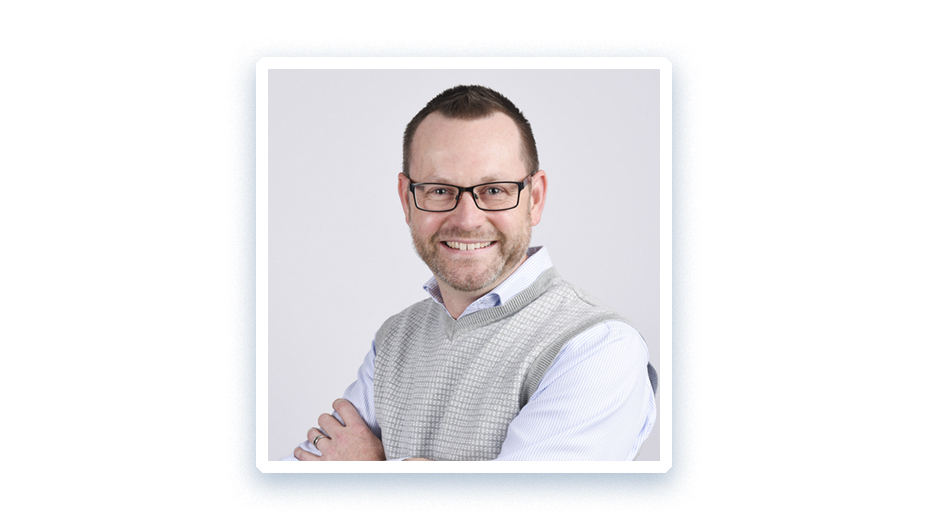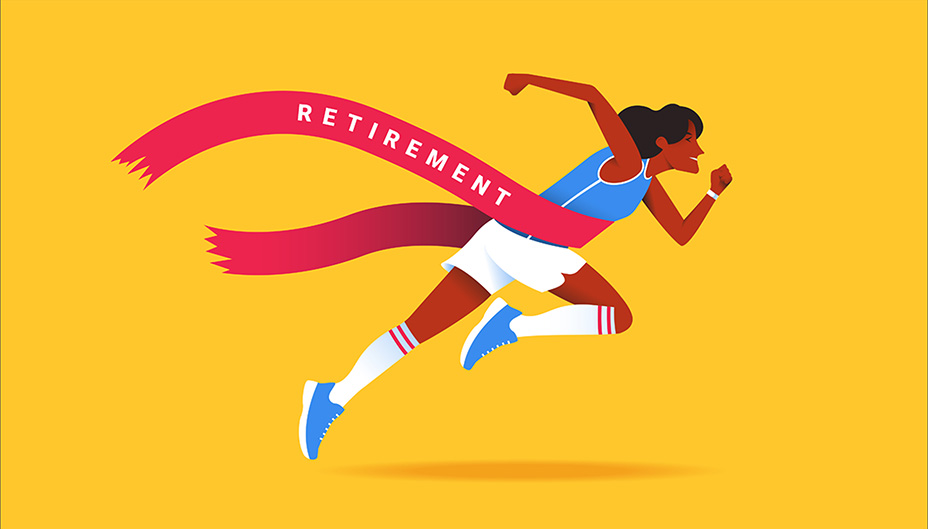Considering the FIRE Lifestyle? Here’s What Your Investments Might Look Like
Written by The Inspired Investor Team
Published on August 6, 2025
minute read
Share:
Tired of the daily grind? Wish you could retire early and travel the globe? You’re not alone. A growing number of people around the world are trying out the FIRE lifestyle (Financial Independence, Retire Early)1, which involves saving at least half of your annual income until you’ve accumulated enough money to live without a traditional job. While the average retirement age in Canada is around 65, FIRE adherents try to punch out much earlier – sometimes decades earlier.
Setting aside 50% – and in some cases, much more – of your income is one thing, but figuring out how to invest those funds so they grow enough to sustain an early retirement is another challenge altogether. Of course, FIRE-related investment strategies will vary depending on factors like risk tolerance, retirement timeline and personal goals. We asked three people how they did it.
The world travellers
Gillian Batt and Stephanie Myers had always planned to work until they were in their 60s – “I thought that was the way to do things,” says Myers, who spent years in marketing – but after moving from Toronto to Singapore in 2013, their plans started to change. “Not only did this move expand our minds and horizons, but it also helped us grow our investments and plan for a future of freedom,” they write on their blog, Our Freedom Years.
When Batt – who Myers describes as a “strategic and knowledgeable investor” – started taking the lead on their finances, the couple realized they could potentially retire much sooner than expected.
For the first year, they counted every dollar they spent, assessing whether each purchase was “bringing us the long-term happiness we might get from unlocking a completely different lifestyle,” says Batt. They began buying stocks and investing in different sectors, including real estate investment trusts (REITs).
Ultimately, though, they simplified their strategy, investing in two broad-based equity exchange-traded funds (ETFs) – one Canadian and one global – along with a fixed income fund, and they used dollar-cost averaging. “The most boring approach worked for us,” Batt says. “We invested in the world.”
After quitting their jobs in 2019 – Batt retired at 38 and Myers at 46 – they travelled far and wide. Now, they’re travel content creators with a blog and a YouTube channel, which earns them enough to buy camera gear. “It’s a hobby that pays for itself,” says Myers. The rest of their income comes entirely from their investment portfolio.
 The equities lover
The equities lover
Mark Seed is a big fan of the “FI” aspect of FIRE, but he’s not so sure about the “RE.” “I feel good, I’ve got energy; I don’t necessarily see myself stopping all forms of work,” he says. Seed, who works part-time at Canadian Blood Services in Ottawa, subscribes to the FIRE subset known as FIWOOT (Financial Independence, Work On Own Terms). That said, in the summer of 2024, Seed and his wife reached their “crossover point” – the moment when income from their investments began to exceed their expenses. “It provides us with financial flexibility,” he says of their newly acquired work-optional status. He’s considering fully retiring in 2026.
When it comes to investing, Seed says he’s been on a journey. He started with mutual funds in the early 2000s, but the Great Financial Crisis prompted him to learn more about investing and reevaluate his goals. “I became a self-taught, do-it-yourself investor, where I picked and chose my own stocks,” he says. He learned that low-cost ETFs “were probably a smart thing to do”, too.
Now in his early 50s, Seed holds a mix of individual dividend stocks and ETFs to diversify his portfolio beyond Canada. He’s also more aggressive than most investors: rather than taking the 60/40 equities-to-fixed-income approach that many investors do, his portfolio holds 90% to 95% in equities, with the rest in cash. “History says markets tend to go up more often than they go down, and I’m a big believer in that kind of market history,” he says. “I’m looking at it from a total return perspective. On average, my portfolio can generate more money than I need to live.”

The frugal freedom seekers
Kristy Shen wasn’t immune to the social pressure to get a good job, buy a house and keep up with the Joneses. Straight out of engineering school, she worked a corporate job at a leading bank and spent a good chunk of her income in restaurants and bars to decompress from the stress.
But about 20 years ago, she and her now-husband, Bryce Leung, realized their lifestyle didn’t match their goals. They started an aggressive saving and investing strategy that allowed them to quit their jobs at 31. They later found a new income stream as bloggers and book authors, writing about their financial experiences.
Even during their heavy spending phase in 2006, Shen and Leung still put away half their income – $5,750 per month – thanks in part to not owning a car and having no student loans. By the time they retired in 2014, they were saving 81% of their income, more than $11,000 per month.
Once they doubled down on their savings goals, they turned to low-fee investments such as index ETFs to maximize returns. They now maintain a 75/25 split between equities and fixed income, with near-equal thirds allocated to Canadian, U.S. and international markets.
Today, their portfolio stands at around $1.7 million. They rely on dividends to help fund their lifestyle – and credit their low-fee approach for much of their portfolio’s growth. “One of the reasons our portfolio increased so much over time is because of [the lack of] investment fees,” says Shen. “Half a percentage over time actually compounds significantly.”
Aggressively saving to retire early may not be for everyone, but those who want to give it a try will likely want to be strategic about how they’re investing, and build a plan that suits their personal needs, timeline and risk tolerance. As Batt, Myers, Seed and Shen have shown, there are several ways one might move towards financial independence and/or early retirement, with varying levels of risk.
Sources
1. Fortune, "The FIRE movement is soaring in popularity — but early retirees report feeling lost and unfulfilled", August 2023
RBC Direct Investing Inc. and Royal Bank of Canada are separate corporate entities which are affiliated. RBC Direct Investing Inc. is a wholly owned subsidiary of Royal Bank of Canada and is a Member of the Canadian Investment Regulatory Organization and the Canadian Investor Protection Fund. Royal Bank of Canada and certain of its issuers are related to RBC Direct Investing Inc. RBC Direct Investing Inc. does not provide investment advice or recommendations regarding the purchase or sale of any securities. Investors are responsible for their own investment decisions. RBC Direct Investing is a business name used by RBC Direct Investing Inc. ® / ™ Trademark(s) of Royal Bank of Canada. RBC and Royal Bank are registered trademarks of Royal Bank of Canada. Used under licence.
© Royal Bank of Canada 2025.
Any information, opinions or views provided in this document, including hyperlinks to the RBC Direct Investing Inc. website or the websites of its affiliates or third parties, are for your general information only, and are not intended to provide legal, investment, financial, accounting, tax or other professional advice. While information presented is believed to be factual and current, its accuracy is not guaranteed and it should not be regarded as a complete analysis of the subjects discussed. All expressions of opinion reflect the judgment of the author(s) as of the date of publication and are subject to change. No endorsement of any third parties or their advice, opinions, information, products or services is expressly given or implied by RBC Direct Investing Inc. or its affiliates. You should consult with your advisor before taking any action based upon the information contained in this document.
Furthermore, the products, services and securities referred to in this publication are only available in Canada and other jurisdictions where they may be legally offered for sale. Information available on the RBC Direct Investing website is intended for access by residents of Canada only, and should not be accessed from any jurisdiction outside Canada.
Explore More

Should I Invest or Pay Down My Mortgage?
Consider these four questions
minute read

As Many Head Back to the Office, Where Could Investors See Changes?
How returning to in-person work could affect a range of investments
minute read

Could Rising Cocoa Prices Be Sweet for Your Portfolio?
We break down why you might want to consider investing in the sweet ingredient
minute read
Inspired Investor brings you personal stories, timely information and expert insights to empower your investment decisions. Visit About Us to find out more.







